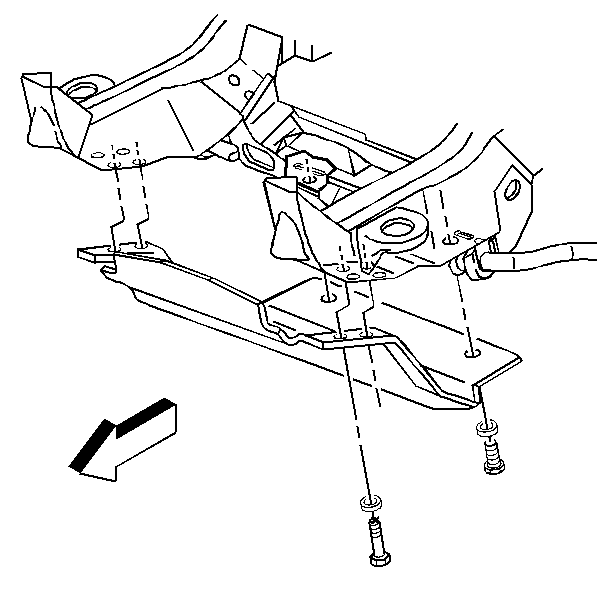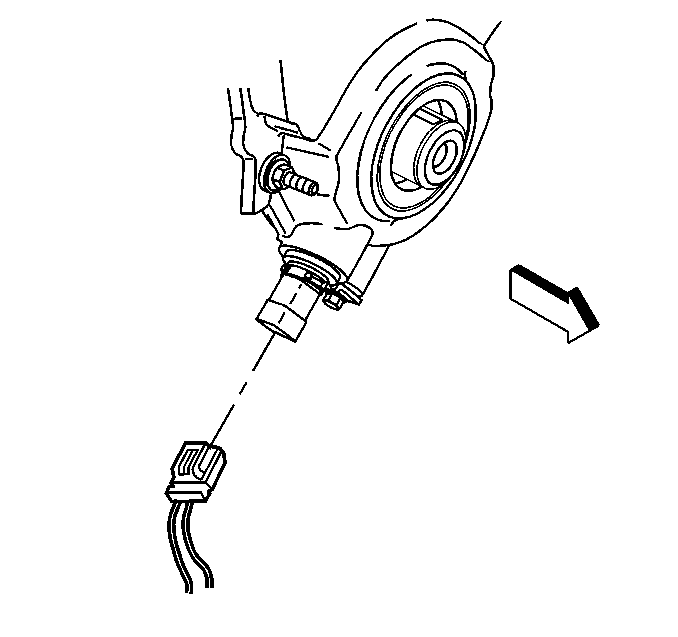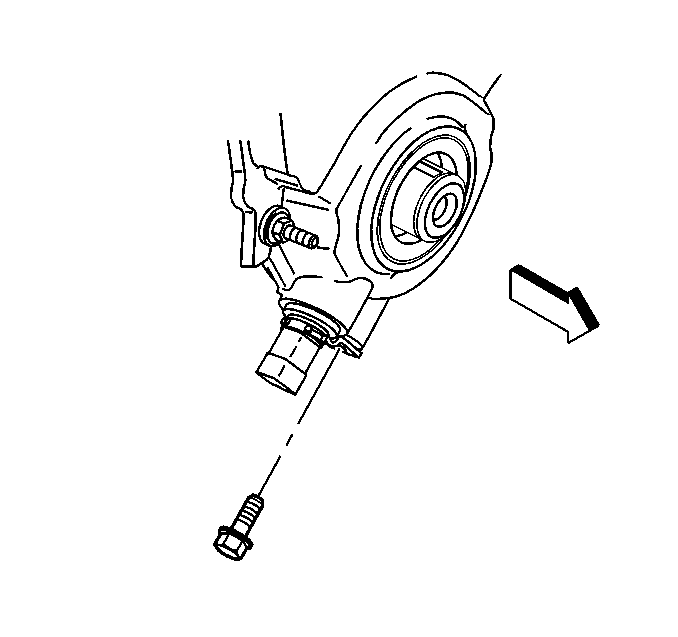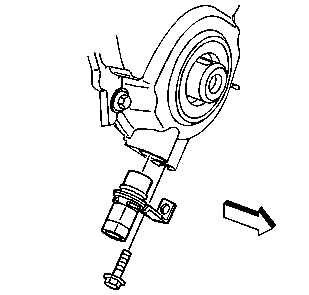Removal Procedure
- Disconnect the negative battery cable.
- Raise the Vehicle. Refer to Lifting and Jacking the Vehicle .
- If the vehicle is equipped with the underbody shield package, then remove the steering linkage shield mounting bolts.
- Remove the steering linkage shield.
- Disconnect the CKP sensor harness connector.
- Remove the CKP sensor mounting bolt.
- Remove the CKP sensor.
Caution: Unless directed otherwise, the ignition and start switch must be in the OFF or LOCK position, and all electrical loads must be OFF before servicing any electrical component. Disconnect the negative battery cable to prevent an electrical spark should a tool or equipment come in contact with an exposed electrical terminal. Failure to follow these precautions may result in personal injury and/or damage to the vehicle or its components.
Important: The CKP System Variation Learn Procedure will need to be performed whenever the Crankshaft Position (CKP) sensor is removed or replaced. Refer to Crankshaft Position System Variation Learn .





Installation Procedure
Important: When installing the CKP sensor, make sure the sensor is fully seated before tightening the mounting bolt. A poorly seated CKP sensor may perform erratically; possibly setting false DTCs.
- Replace the CKP sensor O-ring.
- Lubricate the O-ring with clean engine oil before installing the CKP sensor.
- Install the CKP sensor.
- Install the CKP sensor mounting bolt.
- Connect the CKP sensor harness connector.
- Install the steering linkage shield.
- Install the steering linkage shield mounting bolts.
- Lower the Vehicle. Refer to Lifting and Jacking the Vehicle .
- Connect the negative battery cable.
- Perform the CKP System Variation Learn Procedure. Refer to Crankshaft Position System Variation Learn .
Important: Do not reuse the original O-ring.

Important: Make sure the CKP sensor mounting surface is clean and free of burrs.

Notice: Use the correct fastener in the correct location. Replacement fasteners must be the correct part number for that application. Fasteners requiring replacement or fasteners requiring the use of thread locking compound or sealant are identified in the service procedure. Do not use paints, lubricants, or corrosion inhibitors on fasteners or fastener joint surfaces unless specified. These coatings affect fastener torque and joint clamping force and may damage the fastener. Use the correct tightening sequence and specifications when installing fasteners in order to avoid damage to parts and systems.
Tighten
Tighten the CKP sensor mounting bolt to 20 N·m (15 lb ft).



Tighten
Tighten the bolts to 33 N·m (24 lb ft).
